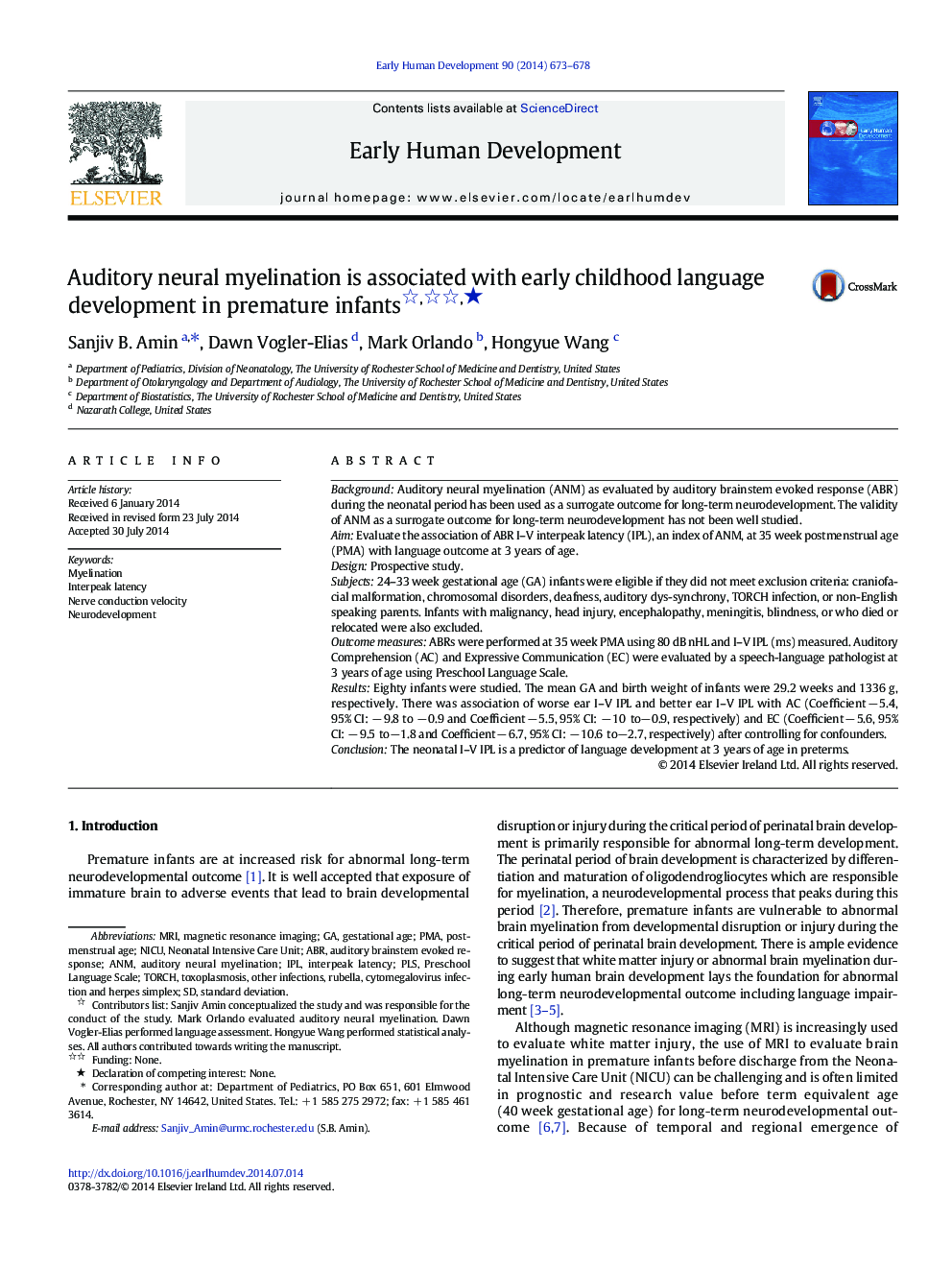| Article ID | Journal | Published Year | Pages | File Type |
|---|---|---|---|---|
| 3916648 | Early Human Development | 2014 | 6 Pages |
BackgroundAuditory neural myelination (ANM) as evaluated by auditory brainstem evoked response (ABR) during the neonatal period has been used as a surrogate outcome for long-term neurodevelopment. The validity of ANM as a surrogate outcome for long-term neurodevelopment has not been well studied.AimEvaluate the association of ABR I–V interpeak latency (IPL), an index of ANM, at 35 week postmenstrual age (PMA) with language outcome at 3 years of age.DesignProspective study.Subjects24–33 week gestational age (GA) infants were eligible if they did not meet exclusion criteria: craniofacial malformation, chromosomal disorders, deafness, auditory dys-synchrony, TORCH infection, or non-English speaking parents. Infants with malignancy, head injury, encephalopathy, meningitis, blindness, or who died or relocated were also excluded.Outcome measuresABRs were performed at 35 week PMA using 80 dB nHL and I–V IPL (ms) measured. Auditory Comprehension (AC) and Expressive Communication (EC) were evaluated by a speech-language pathologist at 3 years of age using Preschool Language Scale.ResultsEighty infants were studied. The mean GA and birth weight of infants were 29.2 weeks and 1336 g, respectively. There was association of worse ear I–V IPL and better ear I–V IPL with AC (Coefficient − 5.4, 95% CI: − 9.8 to − 0.9 and Coefficient − 5.5, 95% CI: − 10 to−0.9, respectively) and EC (Coefficient − 5.6, 95% CI: − 9.5 to−1.8 and Coefficient − 6.7, 95% CI: − 10.6 to−2.7, respectively) after controlling for confounders.ConclusionThe neonatal I–V IPL is a predictor of language development at 3 years of age in preterms.
